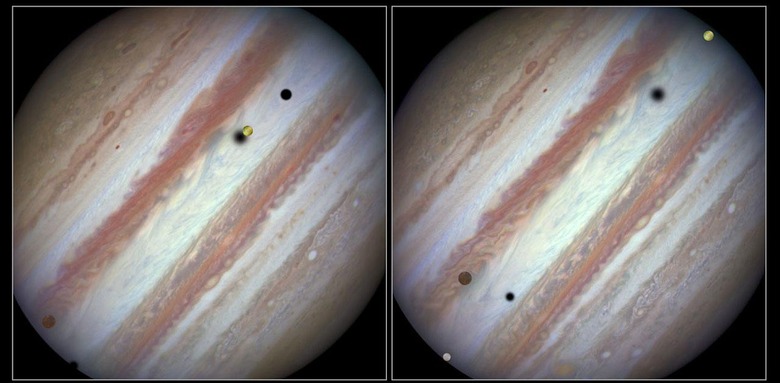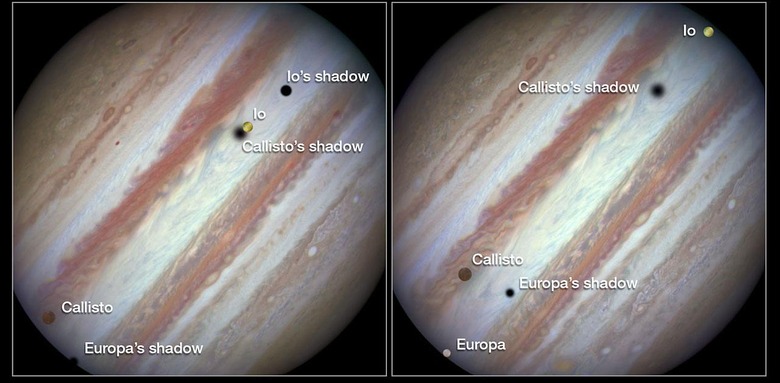Hubble Captures 3x Jupiter Moon Transit
The event that the Hubble space telescope captured this week only happens once or twice every ten years. What we're seeing here is three of the four Galilean satellites – moons, that is – moving around Jupiter's gaseous surface, all within the same frame at the same time. Their shadows are all in the frame at the same time, at least. Here you'll see the moons "Io", "Callisto", and our good friend "Europa." That last one we'll be visiting in the next 9 years if we're lucky.
First you'll see Io appear with its shadow to the upper-right. Io is closest to the planet, and therefor has the sharpest shadow. The shadow immediately behind Io in the first photo is Callisto's shadow, which follows next.
The one Galilean moon you're unable to see here is Ganymede, just out of Hubble's field of view. These two images are captured 40-minutes apart.

"The moons of Jupiter have very distinctive colours," said ESA/Hubble Public Information Officer Georgia Bladon this week.
"The smooth icy surface of Europa is yellow-white, the volcanic sulphur surface of Io is orange and the surface of Callisto, which is one of the oldest and most cratered surfaces known in the Solar System, is a brownish colour."
Callisto is a color very similar to the band of gas it passes in front of, making it appear at first to be another light shadow.

Near the bottom of Jupiter on the left you'll see Europa's shadow, followed by Europa itself.
Image credit: NASA, ESA, Hubble Heritage Team
Europa is an icy planet, one NASA plans to visit in the future due to the possibility of its innards containing life. Under the icy surface of Europa lies an ocean more vast than that of the water mass here on Earth.
Above you'll see a time-lapse image capture video from Hubble showing the movement of the moons over the surface of Jupiter.
Next you'll see a simulation of the same transit, this time in color and this time with super-simple visuals.
These images were captured with Hubble's unique Wide Field Camera 3 in visible light, starting on the 23rd of January, 2015.
"Whilst Hubble captures these moons in great clarity," said Bladon. "They can also be seen with a small telescope or even a decent pair of binoculars. Why not try it at home?"
Let us know if you capture an image of these moons – or of Jupiter at any point – we'd love to have a peek!
